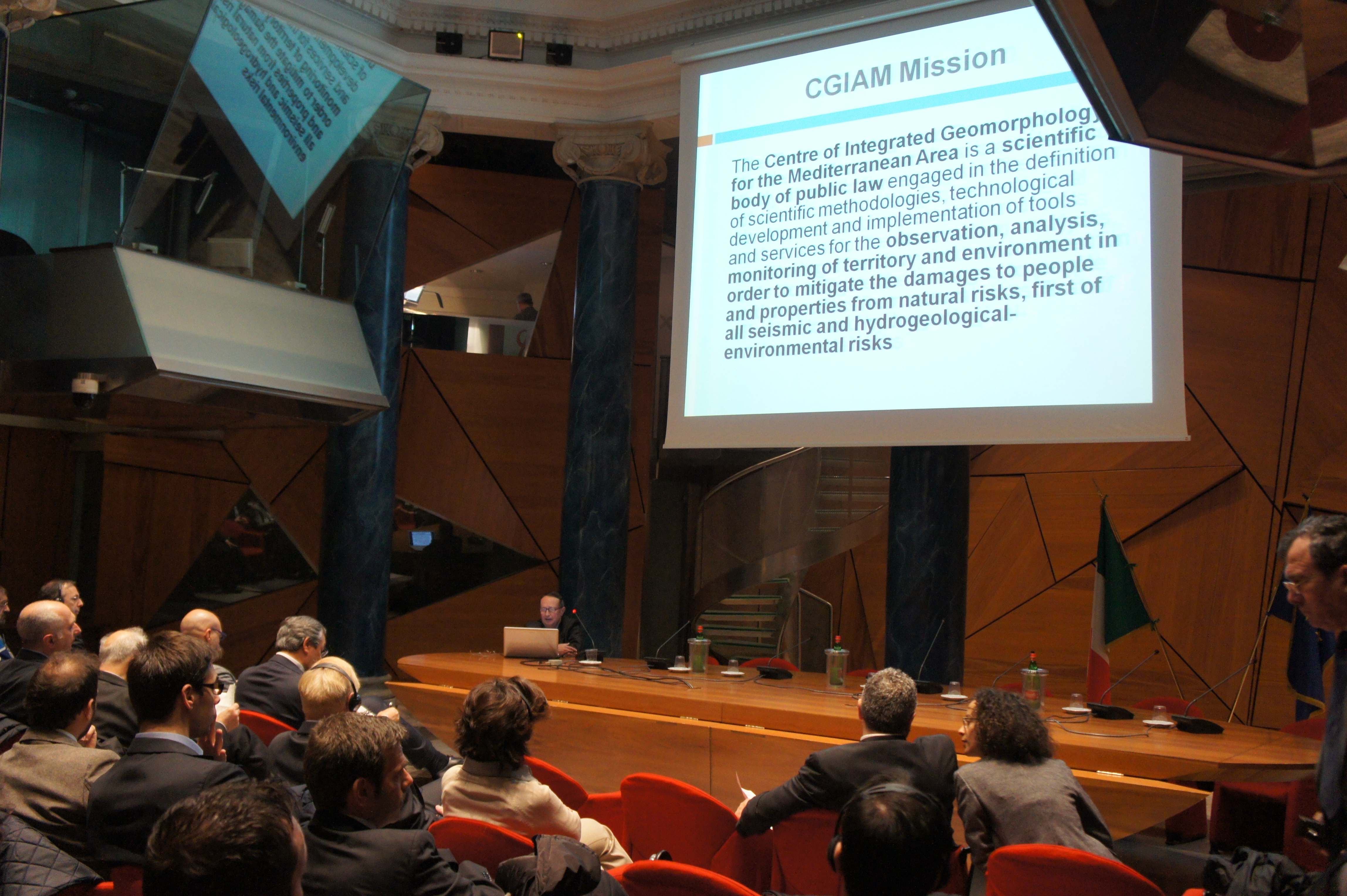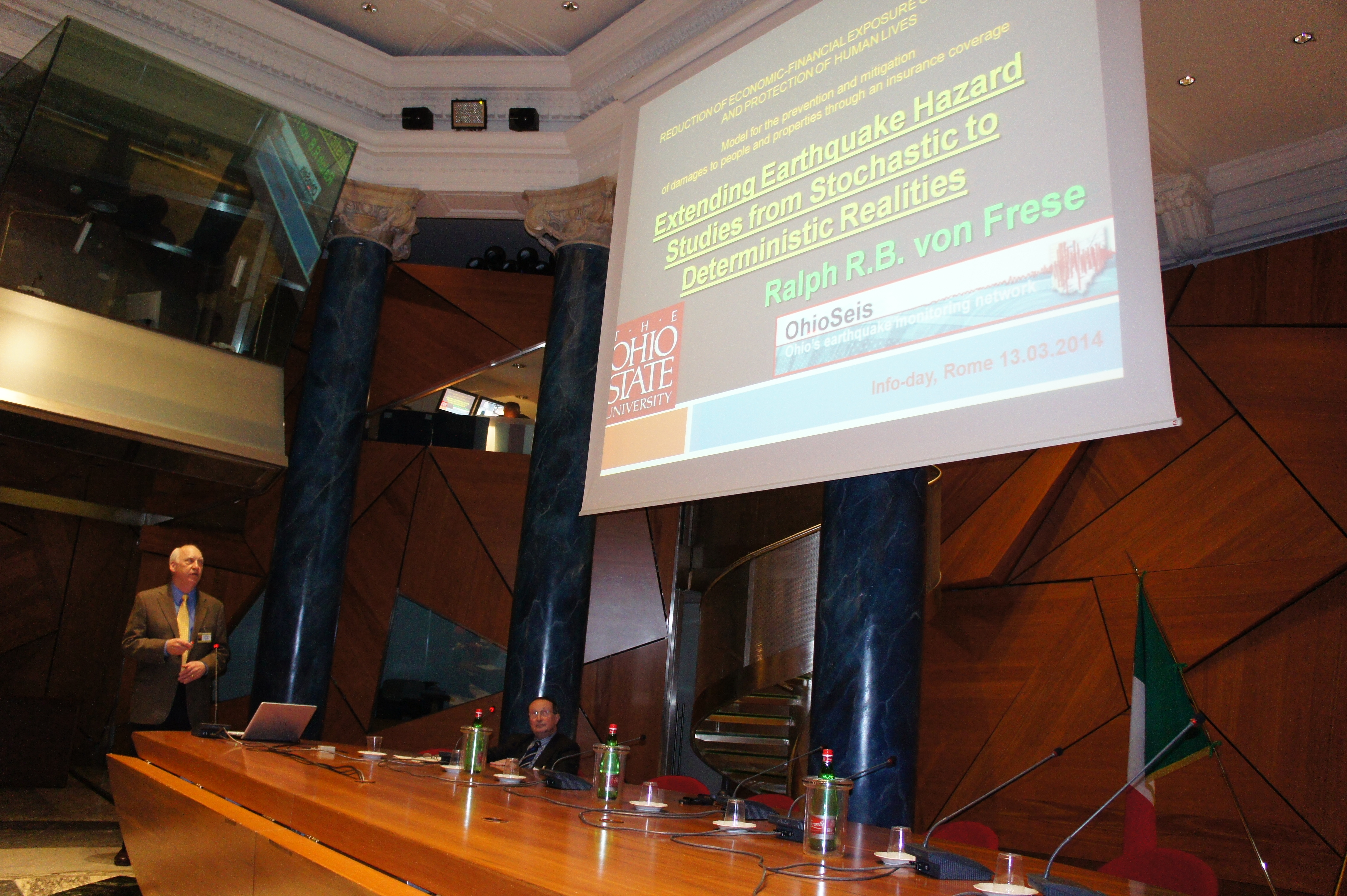Models for the reduction of the economic-financial exposure of the state and protection of human lives
Models for the prevention and mitigation of damages to people and properties through an insurance coverage
A three-day work session, organised by the Centre for Integrated Geomorphology for the Integrated Area (CGIAM) for the definition and presentation of the project “Models for the prevention and mitigation of damages to people and properties through an insurance coverage in the event of catastrophic disasters” was held in Rome on 11-13 march 2014. CGIAM is project proponent and executor.
The work session was closed on 13th March at the Hall of Columns of the House of Deputies with the presentation of the project proposal at the presence of national and international experts and the representatives of the main insurance companies.

The project, defined in cooperation with the National Institute of Geophysics and Volcanology (INGV) and the Network of University Laboratories of Earthquake Engineering (ReLUIS), aims to promote the development of models for reducing the economic-financial exposure of the State in the event of catastrophic events such as earthquakes, floods and landslides, both through the development of innovative strategies of prevention and mitigation for the buildings (public and private) and infrastructures safety and by supporting the insurance companies in the definition of the insurance premium depending on the buildings vulnerability, typology and area.
The project assumption is that Italy is the one of the countries most exposed to natural disasters, including seismic and hydrogeological risks. Thus, it is necessary to define innovative solutions for reducing the economic-financial exposure of the State, mainly in the post-event, and fostering prevention activities.
The insurance system does not directly affect the total costs. Nevertheless, the tax benefits and the reduction of insurance premium for those who intervene on the housing stock can be a stimulus to the mitigation activities, affecting the vulnerability and contributing to the risk reduction.

Finally, the diffusion over the community of the importance of periodic interventions of housing stock or improvement and/or adjustment against natural disasters, not only reduces the amount of any damages and therefore the loss of human lives but it is also a driving force for the national economy as these interventions need the interventions of a wide range of professionals, artisans, businesses, etc.
The project was introduced and explained by the CGIAM President, Dr. Rodolfo Console, Dr. Massimo Chiappini, Director of the INGV Rome 2 and Prof. Carlo Felice Ponzo, ReLUIS Representative.
Ralph von Frese of Ohio State University (USA), David Rhoades of GNS Science (New Zealand), Eleftheria Papadimitriou University of Thessaloniki (Greece), Jean-Sylvain Magagnosc University of Poitiers (France), Emil-Sever Georgescu URBAN-INCERC (Romania), Bogdan Grecu Bujor of the National Institute for Earth Physics (Romania), Luciano Guerriero of the Polytechnic of Bari (First President of the Italian Space Agency) also participated as speakers.
The meeting was concluded by Prof. Stefano Gresta, INGV President, Dr. Maurizio Croce, Special Commissioner Delegate for the mitigation of hydrogeological risk in Apulia and Sicily Regions, Dr. Antonio Colangelo, Vice-President of CGIAM and finally Dr. , Head of the National Fire Service.
Comments are closed.




Follow Us!